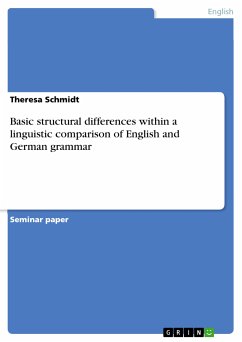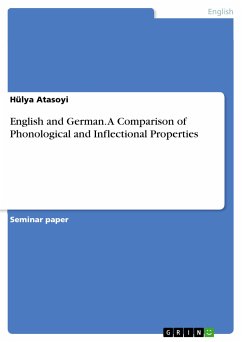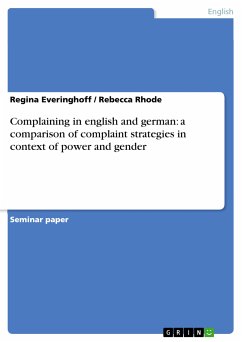Seminar paper from the year 2006 in the subject English Language and Literature Studies - Comparative Literature, grade: 1,7, http://www.uni-jena.de/ (Institut für Anglistik/Amerikanistik), course: HpS Contrastive Linguistics , language: English, abstract: Introduction Since German and English both belong to the same family of languages, i.e. West Germanic, they are - at least, from an historical point of view - closely related languages. By investigating their respective grammatical structures it is to be discussed whether the existing structural contrasts between English and German grammar are related as well. Within this paper the most general and basic of the occurring differences will be summarised and analysed by taking John Hawkins’ A Comparative Typology of English and German. Unifying the Contrasts as a basic source. Hawkins argues that where German and English contrast the latter tends to show less correspondence between form and meaning. This is due to his central hypothesis which says that it is possible to establish general principles which unite the major contrasts between both languages (cf. 4). Hawkins assumes that the differences within the grammatical structures are not accidental ones; they are rather systematic and can be traced back to one “ultimate trigger “ (5) in the history of the English language - phonological changes which caused all further structural differences as either direct or indirect consequences of this process (cf. 5-7). The attempt of this paper is to draw conclusions from this knowledge of the common historical background and apply it to the modern “versions” of the German and English language and the major patterns of variation. To get a descriptive and lucid image of the contrasts between the two languages, we first start on the level of individual words by considering their morphological structure, i.e. we will examine the inflection of the verb and the case marking of noun phrases. This will lead us directly to questions concerning word order and basic grammatical relations on the syntactical level. Finally, a short analysis of verb-first-structures in English and German will round off the discussion.









